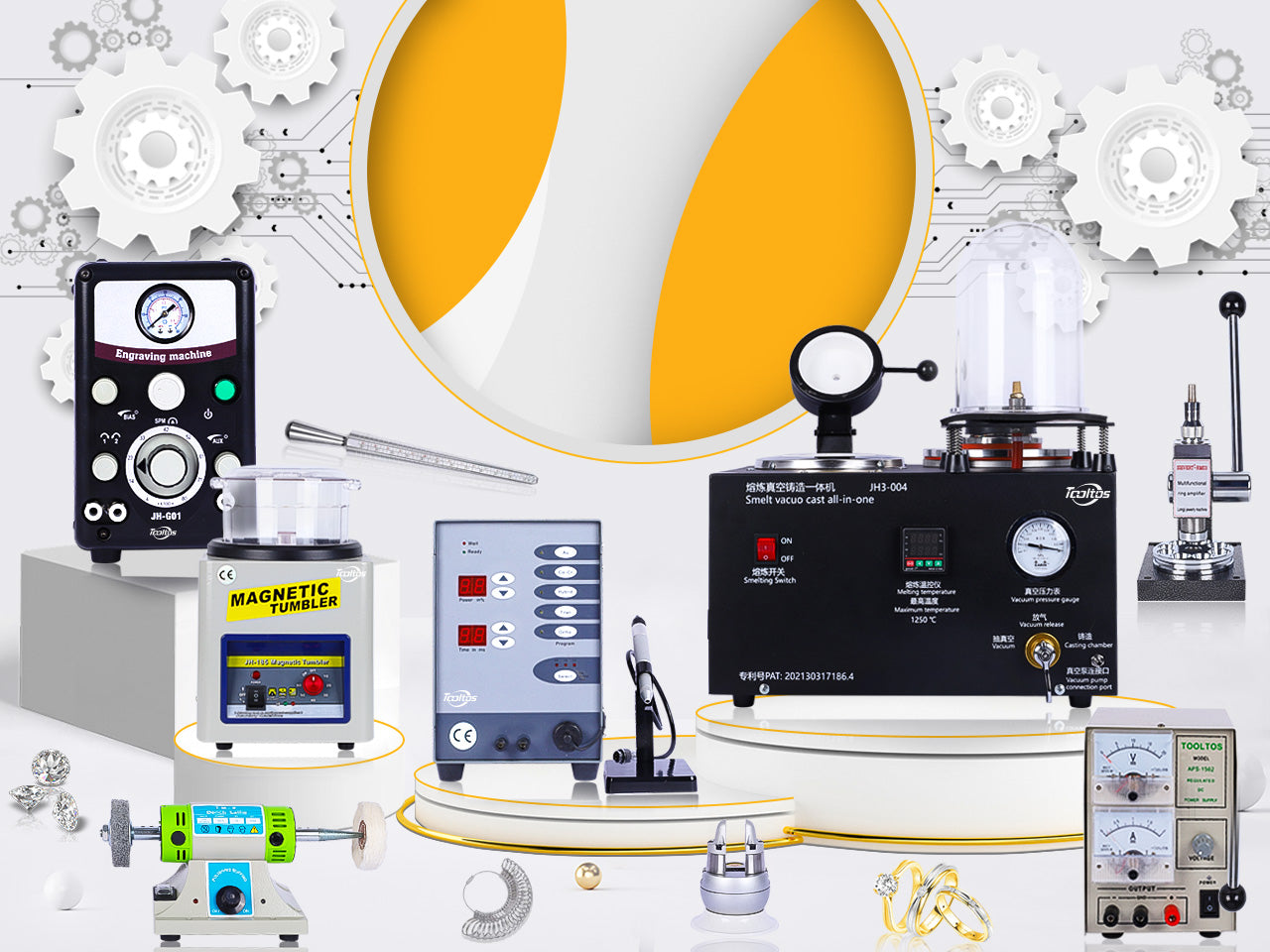One of the most complicated and time-consuming parts of the jewelry making process is polishing and buffing. During this process, you want to get it right the first time, so anything you can do to speed up the process is icing on the cake!
The Foredom Flex Shaft Accessory is an extremely versatile tool that, when used with the right bits, shanks and burrs, can be your most trusted polishing and sanding system for smaller, more intricate pieces such as rings and charms.
Here's how to polish metal with the Foredom Flex Shaft Accessory:
Coarse Abrasive
The first step in the buffing and polishing process is to use the roughest abrasive possible for the job at hand. As well as a Foredom drill, you will need to purchase a range of grinding wheels, including rubber/silicone, paper discs and sanding rollers, for this stage of the buffing and polishing process. These grinding wheels come in a variety of shapes and grits, and which one you choose will largely depend on the piece you're making.
You can expect to be presented with a choice of shapes:
- Wheel
- Cylinder
- Bullet
- Knife edge
- Pear
- Point
- Pin
For those sold separately, you will also need to consider the arbor required to mount the wheel to the Foredom motor. Be sure to check that the manufacturer, shank size and RPM recommendation you're looking at are compatible with your Foredom hanging motor model - there's nothing worse than receiving a new tool through the post and not being able to try it out right away.
What’s next?
Already determined which drill bits are needed? Once you have the pendant bits all laid out in front of you, make sure you can easily tell which is the coarsest bit and which is the finest. If it helps, you can also store them in that order and label them. This will help you remember which color corresponds to which grit size, and you will soon find your own memory system for remembering the grade of the bits.
Ready to choose a polishing abrasive? Next up.
Attach the roughest polishing wheel to the Foredom flexible shaft machine. Secure it in place and you're ready to go. Don't forget to bring protective equipment! Goggles and a face shield are recommended to avoid injury during the process. Methodically polish the piece, making sure to remove any scratches or dents in the metal surface caused by the fabrication process.
Move the flexible shaft machine consistently over the entire piece - it's important to polish in the same direction and avoid concentrating on one area to ensure you don't leave any grooves or dents in the metal.
Now that you have removed any sharp edges, scratches or small errors in the metal, you can move on to the next stage of polishing. In this stage, you can consider the scratches left on the metal from the previous stage of polishing with a coarser grit as having been removed. Repeat this process over and over again on the entire piece of metal, and once you are satisfied with the sanding results on the entire piece of metal, you can buff it to make sure you are happy with it.
Mini Pin Polisher
Polishing an especially small workpiece, a corner or a circle? It's time to switch to a small silicone pin polisher or cylindrical polisher to make sure you get to all the hard-to-reach places before switching to a finer grit wheel.
After using the needle polisher to get into the harder to grind corners of the piece, it's time to switch back to a fine grit wheel to grind out the fine scratches on the piece. After completing the final stage of polishing, it's time to move on to the buffing stage.
Soft polishing wheel
Depending on the type of soft polishing wheel you choose to use with your Foredom flexible shaft machine, you may or may not need to add a little polish. Some soft polishing wheels are already impregnated with polish to make your work sparkle, but be sure to check this with the manufacturer you choose to purchase from.
Regular soft cloth wheels require a small amount of jewelry rouge to be added. To do this, place the soft polishing wheel into the diamond pendant and start the motor with the foot pedal. Pick up the rouge and make contact with the polishing wheel as it moves so that a small amount of rouge is dipped and ready to be used on the metal being worked on.
There is no need to apply a lot of pressure to the metal. Remember, the rouge will finish the cut for you, leaving you with a shiny new product ready to give to your customers.


0 commenti